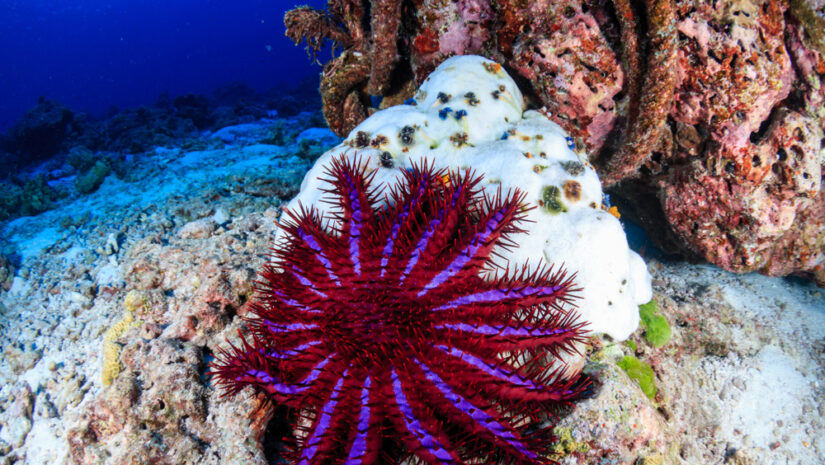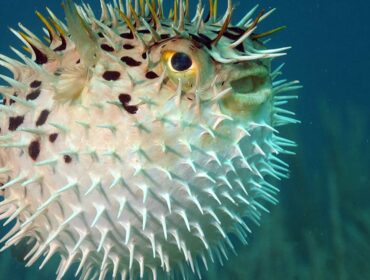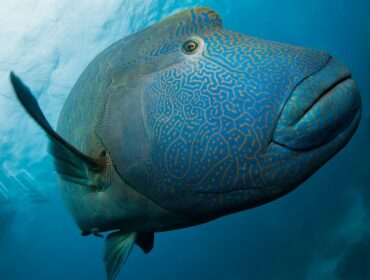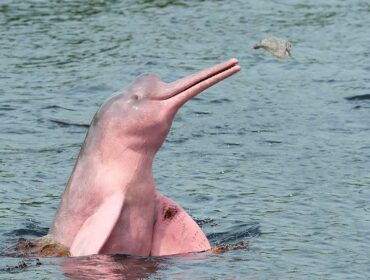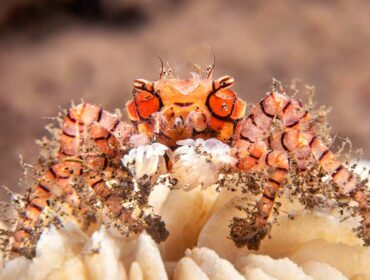Known as the world’s second largest starfish, the crown of thorns starfish (often abbreviated as COTS) is a unique and beautiful marine invertebrate. It usually measures between 25 to 35 cm, although specimens can grow up to 80 cm. These creatures are brightly colored and inhabit coral reefs in the warm waters of the Indian and Pacific oceans, spanning the Red Sea and coastal East Africa to the west coast of Central America.
Crown of thorns starfish can have between seven to 23 arms that are strikingly covered with large numbers of cruel-looking spines, which may be up to two inches long. Despite their stiff appearance, these nocturnal creatures are surprisingly agile, moving at speeds of up to 20 km per hour.
COTS have very few predators because of their flexible, daunting spines which they use to shield themselves from potential predators. These include the giant triton snail, humphead wrasse, titan triggerfish, and harlequin shrimp. When it loses one of its arms, a crown of thorns starfish can regrow a new one in around six months.
Feeding Habits of the Crown of Thorns Seastar
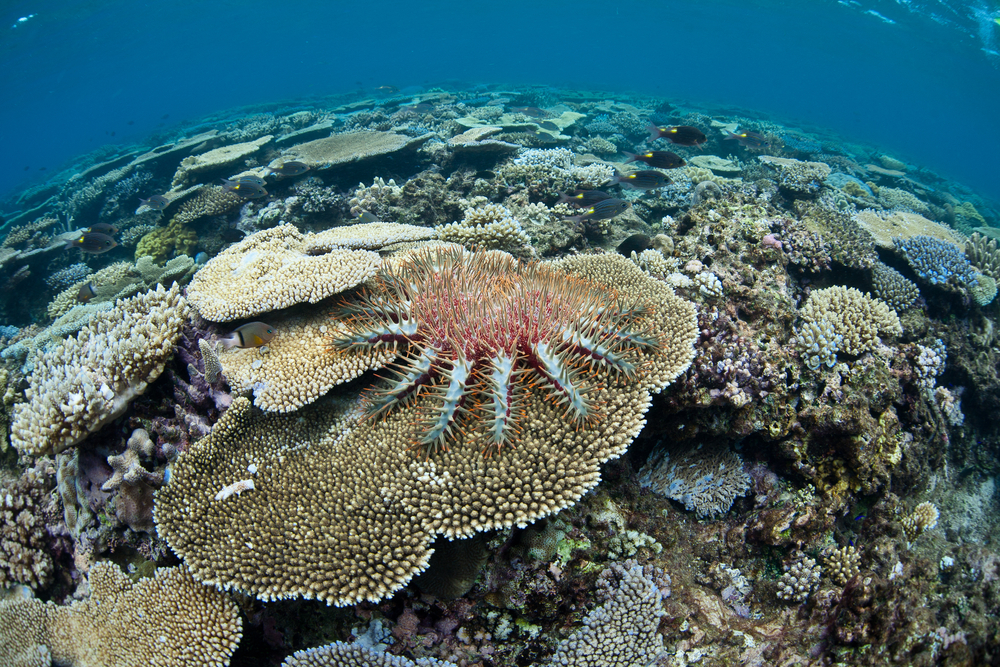
The crown of thorns starfish is a well-known coral predator that can devour 10 square meters of coral annually. A COTS feeds itself by thrusting its stomach out of its body and onto the coral reef. It then releases enzymes to digest the coral polyps, which can take several hours. After the coral digestion process is over, the starfish moves on, leaving only the white coral skeleton behind.
Typically, COTS prefer to feed on fast-growing stony coral polyps, as well as branching and table corals. If food is scarce, they will eat other coral species or soft corals, sponges, algae, and encrusting organisms.
Reproduction via External Fertilization
During breeding season, a female COTS can spawn between 60 to 65 million eggs via a process known as external fertilization. These starfish reproduce through a method known as broadcast spawning, where several males release sperm and several females release eggs into the water column above the reef simultaneously.
This behavior increases the chances of the eggs becoming successfully fertilized and decreases the risk of them being eaten by predators on the reef surface. The fertilized eggs will then hatch into larvae, which are planktonic for about two to four weeks before settling to the bottom of the ocean. These young COTS feed on coralline algae for several months before switching their diet to corals.
Are Crown of Thorns Starfish Poisonous to Humans?
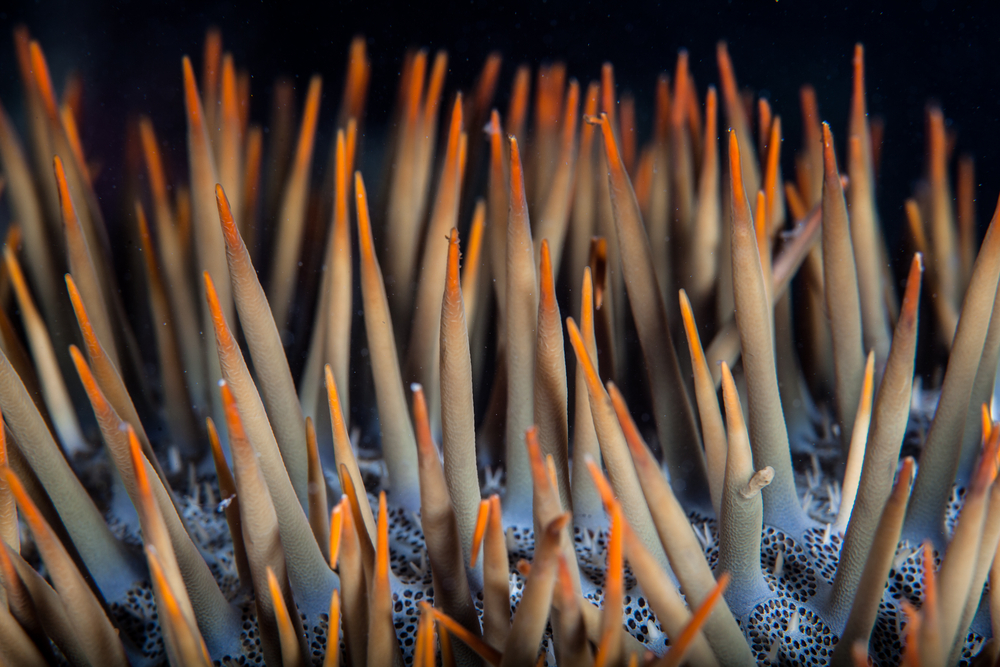
The daunting visual appearance of the spines should discourage inquisitive divers from touching any of the COTS they come across. A brave (and arguably foolish) diver will quickly discover that the sharp spines aren’t the COTS’ only means of defense, as the spines contain neurotoxins and starfish poison that are dangerous to both humans and marine creatures.
The spines are brittle and can easily pierce through a wetsuit, causing a nasty puncture wound laced with venom which will require surgical removal. A snorkeler or scuba diver who dares handle this most dangerous starfish can suffer from nausea, infection, and painful, swollen extremities that can last for more than a week. Some divers kill these predators by injecting the COTS’ own stomach acid into each of their many arms.
If you happen to come across one of these creatures during a dive, remember to admire them from a safe distance but avoid touching them to avoid the dreaded starfish sting.
How the Crown of Thorns Starfish Endangers Coral Reefs
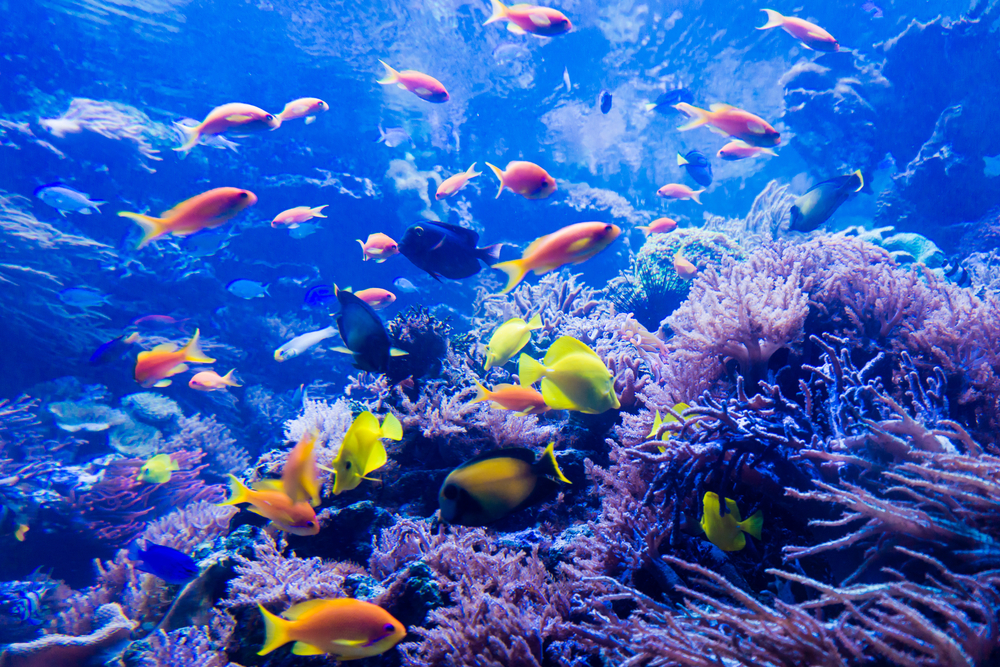
Since COTS are extremely fertile, breeding season can lead to outbreaks given the right conditions. An outbreak is said to occur when there are 30 or more starfish per hectare. These outbreaks may be the result of a natural phenomenon or the overfishing of its primary predator, the giant triton, also known as Triton’s trumpet.
This giant snail can tear COTS to bits with little difficulty. However, this species is often overfished, which has led to population explosions of the COTS in some places and subsequent damage to reef systems. Outbreaks of COTS may be particularly destructive when accompanied by coral bleaching or other stresses caused by human activities.
COTS in the Great Barrier Reef
COTS can be found in reefs throughout the Indo-Pacific region, including the Great Barrier Reef lagoon. In normal numbers, these sea stars serve as an important part of the ecosystem in healthy coral reefs as they tend to feed on faster growing corals. This gives the slower growing species a chance to catch up and enhance the coral diversity of the reefs. However, when COTS appear in excessively large numbers, they become a significant threat to coral reefs and the impact can be devastating.
According to a 2012 study by the Australian Institute of Marine Science, COTS and tropical cyclones were cited as the two leading causes of coral cover loss in the Great Barrier Reef over the past 27 years. In the 1970s, a devastating phenomenon occurred when the northern Great Barrier Reef saw an outbreak of 1,000 COTS per hectare. Such large numbers can destroy an entire reef system in a matter of weeks.
Generally, healthy reefs can recover between COTS outbreaks in about 10 to 20 years. However, recovery takes a lot longer on reefs affected by additional stresses, such as cyclones, coral bleaching, human activities, and poor water quality, leaving the corals extremely vulnerable during the next outbreak.
Dealing with COTS During an Outbreak
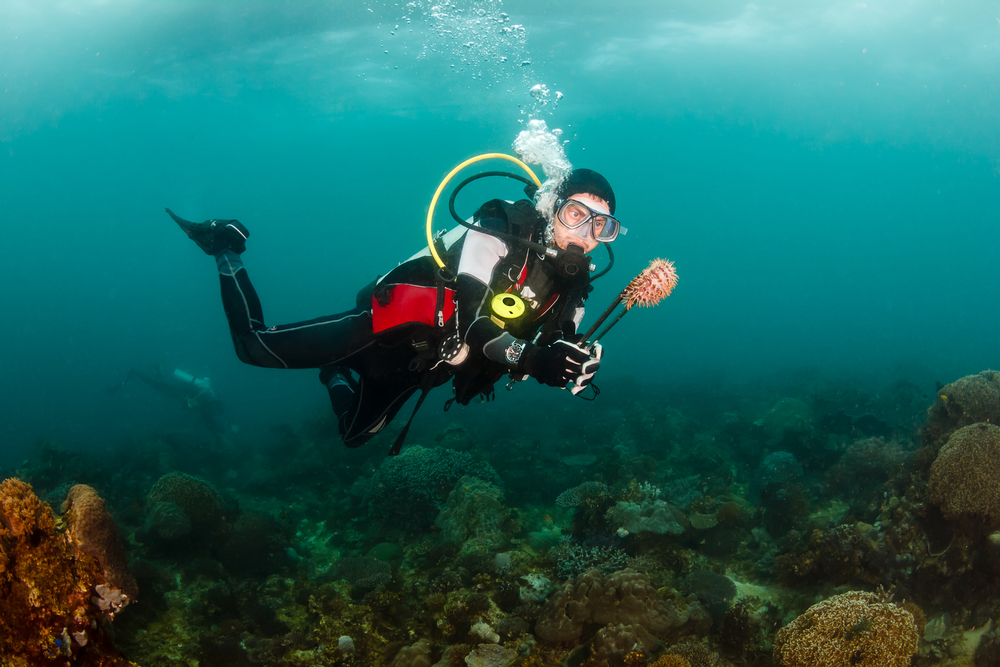
Given the risks COTS pose, scientists and resource managers have developed several programs to control them during an outbreak. These methods include taking the starfish ashore and baking them in the sun, burying them, injecting them with toxic chemicals or compressed air, and building underwater fences to control their movement.
When dealing with a COTS outbreak, divers and snorkelers should be extra wary when they’re in the water. Local dive operators, resort staff, and tourists should also attend training sessions and seminars focusing on COTS ecology to safely combat outbreaks and locally eradicate the species from the reef.
Become more aware by checking out the global database on COTS, which shows possible occurrences and impacts, especially if you live in the Indo-Pacific region. While it is not feasible to prevent COTS outbreaks from occurring, localized efforts to eradicate the species have proven to be successful at preventing reefs from being destroyed by these harmful sea stars.

